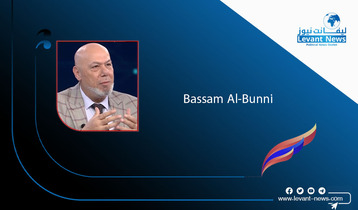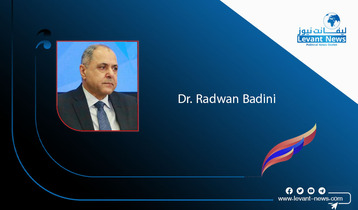-
Could Mahsa Amini's death mark the end of an era!

Last week, Iran's Islamic Revolutionary Guard Corps (IRGC) unleashed a wave of precision- guided missiles and assault drones on Kurdistan Regions Erbil and Sulaimaniye provinces targeting bases of Iranian- Kurdish opposition groups accused of encouraging and fuelling unrest at home.
Ostensibly, the story revolves around the death of the Kurdish women Mahsa (Zhina) Amin, 22, who on September 13 was picked- up by morality police from a Tehran metro station for breaching allegedly the republic's strict dress code for women.
While Iranian authorities claim Mahsa died of a heart attack, her father- Amjad Amini- a government employee, said his daughter was killed at police custody. Either case, the "stranger to Tehran," became a world icon of resistance to repression.
The local occurrence that erupted at Mahsa's funeral procession in the Kurdish (Rojhelat) town of Saqez snowballed spontaneously ensuing angry protests in much of the country.
The IRGC blames Kurdish "separatist groups" operating in Kurdistan Regional Government (KRG) for the ensued nation- wide violence and unrest. For the first time in years, the country is grappled with a most serious challenge.
However, Mahsa's death was a resounding one both at home and abroad and a tipping point that could change the course of events in Iran's modern history. Up to now, the IRGC has failed to contain the snowballing protests.
Failing to quell the unrest, Iranian authorities employed another routinely tactic, the one that could easily gain credence by the regime's followers. Serving the end, cross- border operation "the Prophet of God" was launched in Erbil and Sulaimaniye.
Iran's aerial bombardment of Koya, some 60 kilometers east of Erbil, Zargwez, some 15 kilometers in east Sulaimaniye and Altun Kupri, some 40 kilometers north of Kirkuk, left 18 death and caused considerable damages.
For days, Kurdish parties have endured days of relentless air strikes. However, Erbil and Sulaimaniye's were much more coordinated.
However, apart from the mere targeting bases of Kurdistan Democratic Party of Iran (PDK-I), among others, there seems be a set of ingrained reasons lying behind Wednesday's bombardment.
Unquestionably, one of the main reasons is to divert the attention from internal protests and domestic violence to elsewhere. By doing so, the scene of events were transferred from Iran to Kurdistan representing a different cause.
The protests erupted following the death of Mahsa are not the first in Iranian history. However, differently, unlike the previous ones (2017 and 2019) which remained confined to certain areas and towns, these ones are taking place in a wider scale in major cities and shared by all society classes and ethnicities.
This time, even deeply religious and conservative cities such as Shiraz, Qum and the shrine city of Mashhad are not an exception to the rule. Protests are said to taking place in 150 towns and cities.
The debatable and unjustified murder in Tehran of the Kurdish woman has raised yet unanswered questions on the mission of the so-called morality police in particular. Many supporters of the theologically- oriented regime wonder why Mahsa so barbarically lost life and for what reasons.
Protesters chant "Death to the Dictator," a reference to the ailing Supreme Leader Ayatollah Ali Khamenei, 83, whose portraits are widely being torn down or set on fire. This act was a taboo until recently.
Symbolically, women are seen taking off their headscarves on streets in acts of defiance. Many have burned their headscarves and flocks too.
Secondly, by such an extensive and well-coordinated bombardment, Iran wants to display its advanced force, notably its increasing drone power technology. The impact Iranian- manufactured drones caused against the Ukrainian forces are widely felt since recently being employed by the Russian forces in the sky of Ukraine.
This needs to be felt elsewhere to echo a sense of national pride against "rioters" linked to "foreign enemies" of the republic.
Reports said some 73 ballistic missiles and 20 drones were employed in four areas simultaneously over Koya and elsewhere.
Thirdly, amid stalled negotiations over the Joint Comprehensive Plan of Action (JCPA) known otherwise as the Iran nuclear deal, the Islamic Republic wants to show muscles that Iran has the capability and more importantly will to behave beyond its national borders if its interests are threatened or endangered. It seeks to entrench itself against any scenarios that could take place.
This has some foundation to build upon in a statement attributed to Chief of Staff of Iranian Armed Forces Gen. Mohammad Bagheri's that his country has the right to confront and retaliate against the United States, and aware of their bases inside Kurdistan Region.
In this sense, the tit- for- tat drone strikes between the U.S. and Iranian- backed factions in east Syria could take place on KRG territories.
Fourthly and most importantly, by shouldering the blame on the Iranian Kurdish opposition parties in KRG, the regime bestows upon itself the "implied justification" to deflect local grievances felt at home into external plots, and to send a domestic message to protesters. Such a message tacitly implies that unless protests are brought to a halt, punishment is a severe one for those attached to "malicious" powers.
The recent (mostly feminine) enrages against a masculine authoritarian regime that over the course of four decades have kept women in darkness, signifies something is changing within the structure of a society that was kept repressed for long years.
For the time being, the experienced regime forces seem bartered with the persistence of protests though fatality toll increases.
Being the biggest losers in the country since the coming into power of the Islamic Revolution in 1979, Mahsa Amini seems to have made the voice of Iranian women a heard one. A roaring one, however.
On the sidelines of the United Nations General Assembly 77th session in New York, Iranian President Ebrahim Raisi said in a news conference "If her death was due to negligence, it will definitely be investigated, I promise to follow up on the issue regardless of whether the international forum take a stand or not."
However, upon home return, and as events were rapidly developing, Raisi said despite "grief and sorrow" of Amini's death, public security "is a red line of the Islamic Republic of Iran and no one is allowed to break the law and cause chaos."
This, among others, could be a precursor to what could take place in the days to follow in a country that shaped all world's religions in the past, and still garners world attention at present, a country where Zoroaster, once fleeing persecution, spent long years on Mount Savalan meditating, however.

Lazghine Ya'qoube
You May Also Like
Popular Posts
Caricature
BENEFIT AGM approves 10%...
- March 27, 2025
BENEFIT, the Kingdom’s innovator and leading company in Fintech and electronic financial transactions service, held its Annual General Meeting (AGM) at the company’s headquarters in the Seef District.
During the meeting, shareholders approved all items listed on the agenda, including the ratification of the minutes of the previous AGM held on 26 March 2024. The session reviewed and approved the Board’s Annual Report on the company’s activities and financial performance for the fiscal year ended 31 December 2024, and the shareholders expressed their satisfaction with the company’s operational and financial results during the reporting period.
The meeting also reviewed the Independent External Auditor’s Report on the company’s consolidated financial statements for the year ended 31 December 2024. Subsequently, the shareholders approved the audited financial statements for the fiscal year. Based on the Board’s recommendation, the shareholders approved the distribution of a cash dividend equivalent to 10% of the paid-up share capital.
Furthermore, the shareholders endorsed the allocation of a total amount of BD 172,500 as remuneration to the members of the Board for the year ended 31 December 2024, subject to prior clearance by related authorities.
The extension of the current composition of the Board was approved, which includes ten members and one CBB observer, for a further six-month term, expiring in September 2025, pending no objection from the CBB.
The meeting reviewed and approved the Corporate Governance Report for 2024, which affirmed the company’s full compliance with the corporate governance directives issued by the CBB and other applicable regulatory frameworks. The AGM absolved the Board Members of liability for any of their actions during the year ending on 31st December 2024, in accordance with the Commercial Companies Law.
In alignment with regulatory requirements, the session approved the reappointment of Ernst & Young (EY) as the company’s External Auditors for the fiscal year 2025, covering both the parent company and its subsidiaries—Sinnad and Bahrain FinTech Bay. The Board was authorised to determine the external auditors’ professional fees, subject to approval from the CBB, and the meeting concluded with a discussion of any additional issues as per Article (207) of the Commercial Companies Law.
Speaking on the company’s performance, Mr. Mohamed Al Bastaki, Chairman BENEFIT , stated: “In terms of the financial results for 2024, I am pleased to say that the year gone by has also been proved to be a success in delivering tangible results. Growth rate for 2024 was 19 per cent. Revenue for the year was BD 17 M (US$ 45.3 Million) and net profit was 2 Million ($ 5.3 Million).
Mr. Al Bastaki also announced that the Board had formally adopted a new three-year strategic roadmap to commence in 2025. The strategy encompasses a phased international expansion, optimisation of internal operations, enhanced revenue diversification, long-term sustainability initiatives, and the advancement of innovation and digital transformation initiatives across all service lines.
“I extend my sincere appreciation to the CBB for its continued support of BENEFIT and its pivotal role in fostering a stable and progressive regulatory environment for the Kingdom’s banking and financial sector—an environment that has significantly reinforced Bahrain’s standing as a leading financial hub in the region,” said Mr. Al Bastaki. “I would also like to thank our partner banks and valued customers for their trust, and our shareholders for their ongoing encouragement. The achievements of 2024 set a strong precedent, and I am confident they will serve as a foundation for yet another successful and impactful year ahead.”
Chief Executive of BENEFIT; Mr. Abdulwahed AlJanahi commented, “The year 2024 represented another pivotal chapter in BENEFIT ’s evolution. We achieved substantial progress in advancing our digital strategy across multiple sectors, while reinforcing our long-term commitment to the development of Bahrain’s financial services and payments landscape. Throughout the year, we remained firmly aligned with our objective of delivering measurable value to our shareholders, strategic partners, and customers. At the same time, we continued to play an active role in enabling Bahrain’s digital economy by introducing innovative solutions and service enhancements that directly address market needs and future opportunities.”
Mr. AlJanahi affirmed that BENEFIT has successfully developed a robust and well-integrated payment network that connects individuals and businesses across Bahrain, accelerating the adoption of emerging technologies in the banking and financial services sector and reinforcing Bahrain’s position as a growing fintech hub, and added, “Our achievements of the past year reflect a long-term vision to establish a resilient electronic payment infrastructure that supports the Kingdom’s digital economy. Key developments in 2024 included the implementation of central authentication for open banking via BENEFIT Pay”
Mr. AlJanahi concluded by thanking the Board for its strategic direction, the company’s staff for their continued dedication, and the Central Bank of Bahrain, member banks, and shareholders for their valuable partnership and confidence in the company’s long-term vision.
opinion
Report
ads
Newsletter
Subscribe to our mailing list to get the new updates!




















